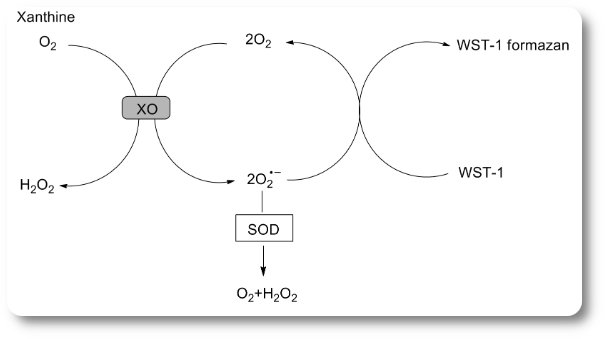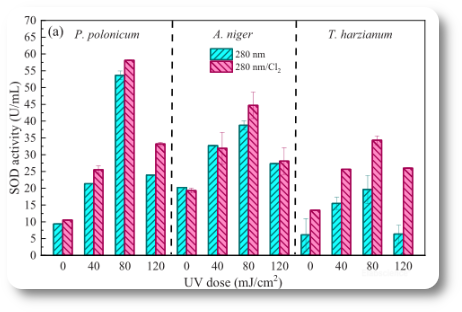 |
| ||||||
| |||||||
| / Каталог / Реагенты для научных исследований / Assay kits - колориметрические наборы для определения активности соединений / Elabscience Assay kits / Окислительный стресс / Oxidative Stress / Супероксиддисмутаза / Superoxide Dismutase (T-SOD) | |||||||||||||||||||||||||||||||||||||||||||||||||||||||||||||||
Набор для анализа активности Общей супероксиддисмутазы / Total Superoxide Dismutase (T-SOD) Activity Assay Kit (WST-1 Method)Total Superoxide Dismutase (T-SOD) Activity Assay Kit (WST-1 Method)
Detection principleThe activity of SOD was measured by WST-1 method in this kit and the principles of the WST-1 is as follows. Xanthine Oxidase (XO) can catalyze WST-1 react with O2.- to generate a water-soluble formazan dye. SOD can catalyze the disproportionation of superoxide anions, so the reaction can be inhibited by SOD, and the activity of SOD is negatively correlated with the amount of formazan dye. Therefore, the activity of SOD can be determined by the colorimetric analysis of WST-1 products.

Performance characteristics
Images
The activity of SOD increased at the beginning of the UV exposure until 80 mJ/cm2, then decreased with the UV fluence reached 120 mJ/cm2. The induced SOD activity was higher in the UV/Cl2 process (purple) compared with that of the UV alone process. Q Wan et al investigate the efficiency and mechanism of fungal spore disinfection using UV-LEDs irradiation and chlorine. Total superoxide dismutase (T-SOD) activity of fungal spore was determined using T-SOD activity assay kit (E-BC-K020-M). Dilution of sampleThe optimal sampling volume are different for different species, the SOD also are different for different samples. It is recommended to take 2~3 samples to do a pre-experiment, diluting a series of diluent and determine the dilution factor when the SOD inhibition ratio is 25%~65% (the optimal inhibition ratio is the range of 40%~60%.) before formal experiment. The recommended dilution factor for different samples is as follows (for reference only):
Note: The diluent is normal saline (0.9% NaCl) or PBS (0.01 M, pH 7.4). Информация для заказа
| |||||||||||||||||||||||||||||||||||||||||||||||||||||||||||||||
|
|
© ООО «Лабораторная Диагностика» info@LD.ru тел.: +7 495 369-20-43 |
